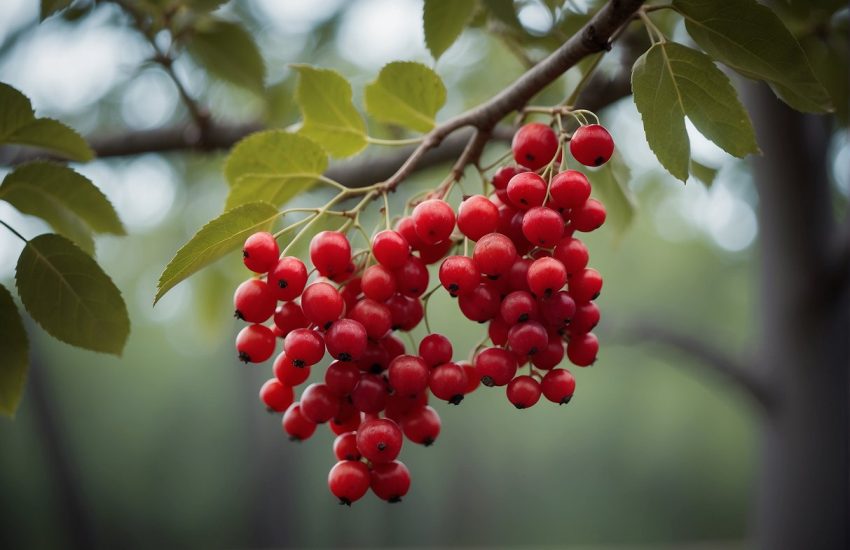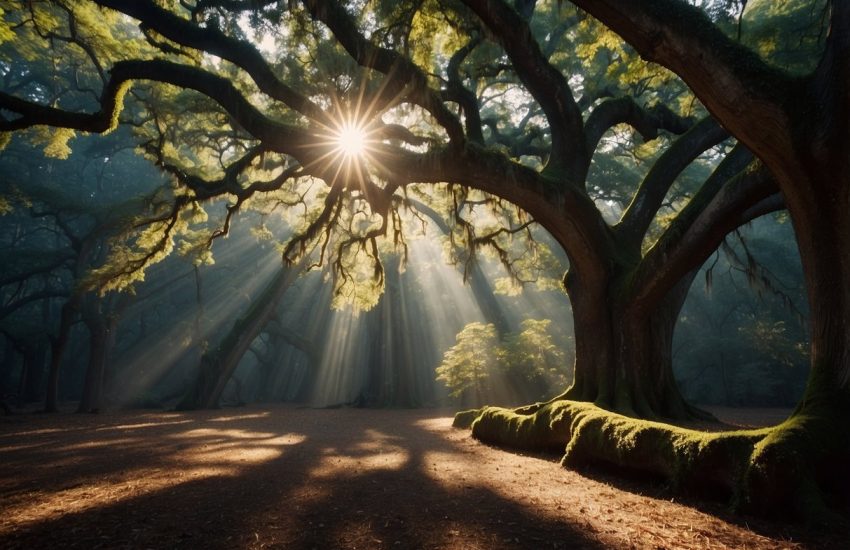Tree That Looks Like Wisteria: Identification and Characteristics
Trees that look like wisteria are a popular choice for gardeners who love the look of the iconic purple flower but want a more manageable plant. Wisteria is known for its stunning, cascading blooms that can add a touch of elegance to any outdoor space. However, it can also be an invasive and difficult plant to maintain, making it less than ideal for some gardeners. Luckily, there are several trees that look like wisteria but are much easier to care for.

One such tree is the Texas Mountain Laurel, which boasts beautiful purple flowers that look similar to wisteria blooms. This tree is native to the southwestern United States and is known for its drought tolerance and low maintenance requirements. Another tree that looks like wisteria is the Golden Chain Tree, which has long, pendulous clusters of yellow flowers that resemble wisteria blooms. This tree is also low maintenance and is not invasive like wisteria can be.
If you’re looking for a flowering plant that resembles wisteria but doesn’t require as much upkeep, there are several options to consider. The Chaste Tree, for example, has long, spiky clusters of purple flowers that look similar to wisteria blooms. This plant is also known for its ability to attract butterflies and other pollinators, making it a great addition to any garden. Overall, there are many trees and plants that resemble wisteria and can add a touch of beauty to your outdoor space without the hassle of maintaining a more difficult plant.
Identifying Trees Similar to Wisteria

Wisteria is a popular deciduous vining plant with fragrant flowers that bloom in shades of purple, lavender, lilac, and violet. However, there are several trees that have similar characteristics to wisteria. In this section, we will discuss the characteristics of wisteria-like trees and popular wisteria mimics in landscaping.
Characteristics of Wisteria-Like Trees
Wisteria-like trees are characterized by their twisted branches and clusters of fragrant flowers that bloom in shades of purple, lavender, lilac, and violet. Some of the most popular wisteria-like trees include:
Jacaranda: Jacaranda trees are known for their stunning purple flowers and delicate fern-like foliage. They are commonly used as specimen trees in landscape design.
Tree Wisteria: Tree wisteria, also known as Chinese wisteria, is a small tree that produces drooping clusters of fragrant flowers in shades of purple, lavender, and lilac. It is commonly used in landscape design as a specimen tree.
Empress Tree: The empress tree produces pale purple foxglove-like flowers that cluster rather than drape. Its massive catalpa-like leaves lend the tree to being used as ground cover, by repeatedly cutting it back nearly to the soil. However, if left to grow, it will reach 40 – 65 feet (12-20 m).
Texas Mountain Laurel: The Texas mountain laurel produces clusters of fragrant flowers in shades of purple and violet. It is a small tree that is commonly used in landscape design as a specimen tree.
Chaste Tree: The chaste tree produces spikes of fragrant flowers in shades of purple, lavender, and lilac. It is a small tree that is commonly used in landscape design as a specimen tree.
Royal Empress Tree: The royal empress tree produces clusters of fragrant flowers in shades of purple and lavender. It is a fast-growing tree that is commonly used in landscape design as a shade tree.
Desert Willow: The desert willow produces clusters of fragrant flowers in shades of purple and lavender. It is a small tree that is commonly used in landscape design as a specimen tree.
Eastern Redbud: The eastern redbud produces clusters of fragrant flowers in shades of pink and purple. It is a small tree that is commonly used in landscape design as a specimen tree.
Crape Myrtle: The crape myrtle produces clusters of fragrant flowers in shades of purple, lavender, and lilac. It is a small tree that is commonly used in landscape design as a specimen tree.
Common Lilac: The common lilac produces clusters of fragrant flowers in shades of purple, lavender, and lilac. It is a small tree that is commonly used in landscape design as a specimen tree.
Korean Lilac Tree: The Korean lilac tree produces clusters of fragrant flowers in shades of purple, lavender, and lilac. It is a small tree that is commonly used in landscape design as a specimen tree.
Popular Wisteria Mimics in Landscaping
Wisteria-like trees are commonly used in landscape design as specimen trees or shade trees. They can be used to add color and fragrance to a garden or to create a focal point in a landscape design. Some of the most popular wisteria mimics in landscaping include:
Jacaranda: Jacaranda trees are commonly used as specimen trees in landscape design. They are prized for their stunning purple flowers and delicate fern-like foliage.
Tree Wisteria: Tree wisteria is commonly used in landscape design as a specimen tree. It produces drooping clusters of fragrant flowers in shades of purple, lavender, and lilac.
Empress Tree: The empress tree is commonly used in landscape design as a shade tree or ground cover. It produces pale purple foxglove-like flowers that cluster rather than drape.
Texas Mountain Laurel: The Texas mountain laurel is commonly used in landscape design as a specimen tree. It produces clusters of fragrant flowers in shades of purple and violet.
Chaste Tree: The chaste tree is commonly used in landscape design as a specimen tree. It produces spikes of fragrant flowers in shades of purple, lavender, and lilac.
In conclusion, there are several trees that have similar characteristics to wisteria. Jacaranda, tree wisteria, empress tree, Texas mountain laurel, chaste tree, royal empress tree, desert willow, eastern redbud, crape myrtle, common lilac, and Korean lilac tree are some of the most popular wisteria-like trees. These trees are commonly used in landscape design as specimen trees or shade trees to add color and fragrance to a garden or to create a focal point in a landscape design.
Cultivation and Care of Wisteria-Like Trees
Wisteria-like trees are beautiful and unique, and they require specific care to thrive. In this section, we will discuss optimal growing conditions, maintenance and pruning practices, and propagation and planting tips for these trees.
Optimal Growing Conditions
Wisteria-like trees thrive in full sun and well-drained, moderately fertile soil. They are generally drought-tolerant, but they prefer moist soil. These trees can grow in various soil types, including acidic and neutral soil. They are deciduous plants that grow best in USDA zones 5 through 9.
Spring is the best time to plant wisteria-like trees, as they prefer to establish their roots during the cooler months. However, they can also be planted in early spring or early summer. These trees are fast-growing and require support to prevent their woody stems from breaking.
Maintenance and Pruning Practices
Wisteria-like trees require regular pruning to maintain their shape and promote healthy growth. High-maintenance trees require more frequent pruning, while less aggressive trees can be pruned less often. Regular pruning also helps to control the size of the tree and prevent it from becoming too large for its support.
Maintenance pruning should be done in the fall or winter, while major pruning should be done in the spring or early summer. During maintenance pruning, remove any dead, diseased, or damaged wood. Major pruning involves cutting back the tree to its main framework.
Propagation and Planting Tips
Wisteria-like trees can be propagated from seed or cuttings. Seeds should be planted in containers in the fall or winter and kept in a cool, dry place until spring. Cuttings should be taken in the early summer and planted in well-drained soil.
When planting wisteria-like trees, it is important to choose a location that provides support for the tree. The soil should be moderately fertile and well-drained. These trees can also be planted in containers, but they require regular watering and fertilization.
In conclusion, wisteria-like trees are beautiful and unique, but they require specific care to thrive. By following these cultivation and care tips, you can enjoy the beauty of these trees in your garden.


